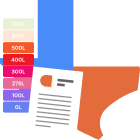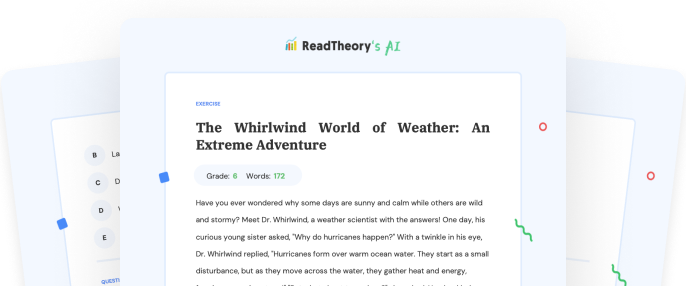Transform Your Teaching
with AI-Powered Worksheets
With ReadTheory’s Instant Worksheet Builder, you can create engaging, grade-appropriate worksheets tailored to your students in minutes. Spark curiosity, save time, and empower critical thinking with AI-powered tools designed for teachers like you.


The Periodic Table: A Symphony of Elements
The Periodic Table, a crowning scientific achievement, is a directory of the building blocks of the universe. Invented in 1869 by Russian chemist Dmitri Mendeleev, it is a testament to human curiosity and ingenuity.
The table organizes the 118 known elements, from the lightest, hydrogen, to the heaviest, oganesson. Ordered by increasing atomic number, the chart smartly categorizes elements into groups based on shared attributes and reactivity.
Dmitri Mendeleev, the father of the Periodic Table, intuitively placed elements into this systematic blueprint, even leaving spaces for undiscovered ones. This predictive capability is one of the table's most remarkable features. Many of these spaces were later filled as elements were discovered or synthesized, validating Mendeleev's design.
The Periodic Table is divided into different families of elements, such as the Alkali metals, Alkaline Earth metals, Halogens, Noble gases, each with unique characteristics. For instance, Alkali metals are highly reactive and not found in nature in their elemental form, while Noble gases are inert and do not readily form compounds.
In modern science, the Periodic Table is more than a mere list. It is a tool that allows scientists to understand the relationships between various elements, predict the properties of new, yet-to-be-discovered elements, and create new materials with desired properties. Without Mendeleev's masterpiece, the world of chemistry, as we know it, would not exist.
Question 1
Who invented the Periodic Table?
Albert Einstein
Isaac Newton
Marie Curie
Dmitri Mendeleev
Robert Boyle
Question 2
What is a unique characteristic of Alkali metals in the Periodic Table?
They are inert and do not readily form compounds
They are found in nature in their elemental form
They are highly reactive and not found in nature in their elemental form
They are non-reactive and found in nature in their elemental form
They are neither reactive nor found in nature in their elemental form
Question 3
What is the lightest element in the Periodic Table?
Helium
Oxygen
Hydrogen
Nitrogen
Carbon
Question 4
What is one of the remarkable features of the Periodic Table?
It can predict the weather
It can predict the properties of yet-to-be-discovered elements
It can predict the outcome of chemical reactions
It can predict the age of elements
It can predict the future of chemistry
Question 5
What is the heaviest known element in the Periodic Table?
Uranium
Plutonium
Oganesson
Radon
Francium
 or share via
or share via

Assign the ReadTheory pretest to determine students' reading levels.

Why Teachers Love
Instant Worksheet Builder?

Tailored Content for Every Student
Craft worksheets with passages and multiple-choice questions customized to your chosen topic and grade level, ensuring relevance and engagement.

Save Hours
of Prep Time
Our AI, Lexi, generates complete worksheets—passages, questions, and answers—in minutes, freeing you to focus on teaching, not planning.

Standards-Aligned Learning
Every worksheet is designed to boost reading comprehension and critical thinking, aligning seamlessly with State Standards to help your students shine.
Personalized teaching
for personalized learning
Browse worksheets created and refined by educators using Lexi—your source for inspiration and ready-to-use resources.


ReadTheory is free for Teachers to use.
Join thousands of educators using ReadTheory for free. Sign up today and start creating in just minutes!





